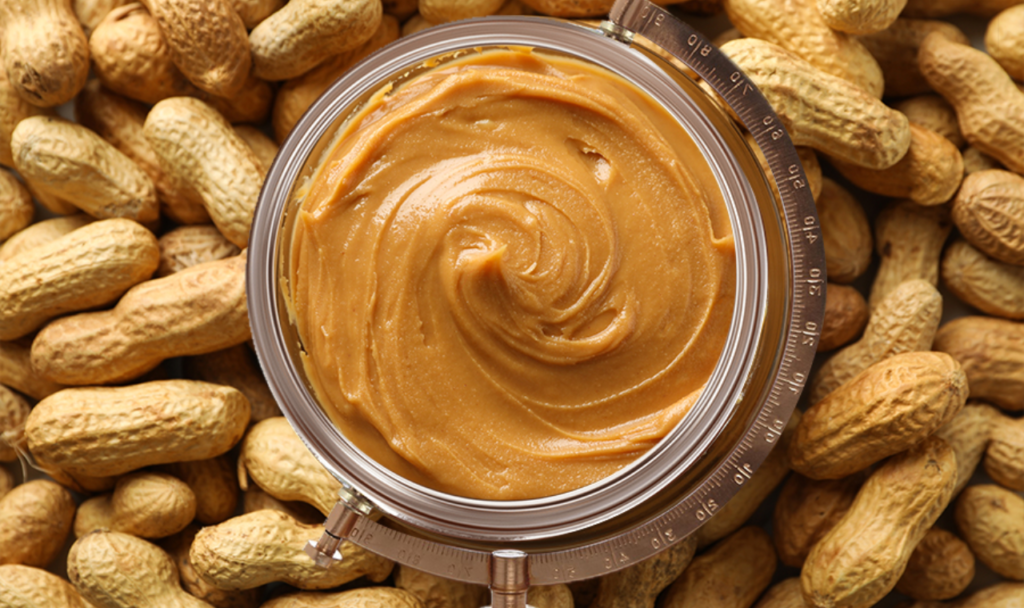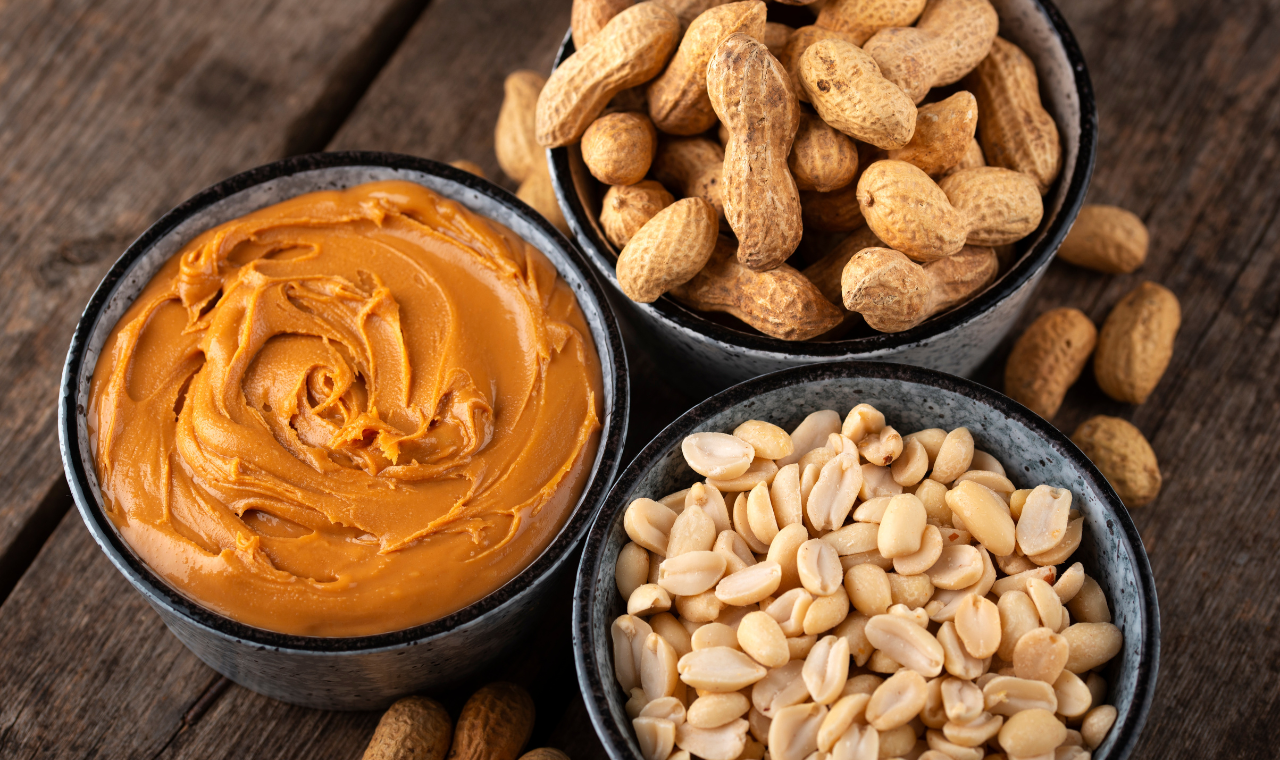Peanut butter is a beloved pantry staple that has been a part of diets worldwide for over a century. Whether spread on toast, blended into smoothies, or used in desserts, this creamy (or crunchy) delight is more than just a tasty treat it’s packed with nutrients and history.
The Origins of Peanut Butter
The history of peanut butter dates back centuries, with evidence suggesting that the Aztecs and Incas ground roasted peanuts into a paste. However, the modern version we recognize today was patented in 1895 by Dr. John Harvey Kellogg, the same mind behind Kellogg’s cereals. He developed it as a protein-rich, easy-to-digest food for patients who had difficulty chewing.
Its popularity skyrocketed when it was introduced to the masses at the 1904 St. Louis World’s Fair. By the early 20th century, peanut butter became a common household item in the U.S., with brands like Skippy and Jif making it a kitchen essential.
Nutritional Profile and Health Benefits
Peanut butter is more than just a delicious spread-it’s a nutrient powerhouse. Here’s a breakdown of what makes it a healthy addition to any diet:
- Protein-Rich: A two-tablespoon serving contains about 7–8 grams of protein, essential for muscle growth and repair.
- Healthy Fats: Contains monounsaturated and polyunsaturated fats, which help maintain heart health and reduce bad cholesterol levels.
- Vitamins and Minerals: Provides vitamin E, magnesium, and B vitamins, all of which contribute to overall well-being.
- Fiber Content: Offers around 2 grams of fiber per serving, aiding in digestion and promoting gut health.
According to the U.S. Department of Agriculture (USDA), peanut butter is a nutrient-dense food that can be part of a balanced diet when consumed in moderation.
Peanut Butter and Heart Health
A common concern with peanut butter is its fat content. However, studies show that the type of fat matters more than the quantity. Peanut butter is rich in unsaturated fats, which help lower the risk of heart disease.
According to the National Institutes of Health (NIH), diets that include moderate amounts of nuts and nut butters can reduce the risk of cardiovascular disease.
Weight Management and Peanut Butter
Contrary to popular belief, peanut butter can be part of a weight loss or weight management plan. Its combination of protein, fiber, and healthy fats helps promote satiety, reducing the likelihood of overeating. Research published by the National Library of Medicine (NLM) suggests that consuming nuts and nut butters in moderation does not lead to weight gain and may even support metabolism.

How to Choose the Healthiest Peanut Butter
Not all peanut butters are created equal. Many commercial brands contain added sugars, hydrogenated oils, and preservatives. To get the healthiest option:
- Look for natural or organic peanut butter with minimal ingredients (just peanuts and a pinch of salt).
- Avoid peanut butter with hydrogenated oils, which contain trans fats that are harmful to heart health.
- Check for low sodium and low sugar varieties to reduce unnecessary additives.
The U.S. Food and Drug Administration (FDA) provides guidelines on food labeling and nutrition facts, helping consumers make informed choices.
Peanut Butter Storage: Room Temperature or Refrigeration?
Storage largely depends on the type of peanut butter.
- Commercial peanut butter can be stored at room temperature for months due to added stabilizers.
- Natural peanut butter should be refrigerated to prevent oil separation and extend shelf life.
Keeping peanut butter in the fridge helps preserve its freshness, though it may make it slightly harder to spread. If stored at room temperature, stir it occasionally to maintain consistency.
Fun Facts About Peanut Butter
- The average American consumes over 2,500 peanut butter and jelly sandwiches in their lifetime.
- An acre of peanuts can produce approximately 30,000 peanut butter sandwiches.
- About 60% of people prefer creamy peanut butter over crunchy, according to surveys.
- Peanut butter has been a part of military rations for U.S. soldiers since World War II due to its high energy content and long shelf life.
Is Peanut Butter Safe for Everyone?
While peanut butter is a nutritious choice for most, it can be dangerous for those with peanut allergies. The Centers for Disease Control and Prevention (CDC) reports that peanut allergies affect approximately 1.2% of the U.S. population and can cause severe allergic reactions. If you or someone in your household has a peanut allergy, consider alternatives like almond or sunflower seed butter.
Peanut Butter in the Economy and Agriculture
Peanut farming is a significant industry, particularly in the U.S., where peanuts are grown primarily in states like Georgia, Texas, and Alabama. According to the U.S. Department of Agriculture, the U.S. produces over 6 billion pounds of peanuts annually, with a large percentage used to make peanut butter.
The peanut industry supports thousands of farmers, and organizations like the National Peanut Board work to promote peanut farming and research.
Peanut Butter in Sports and Fitness
Athletes and fitness enthusiasts frequently consume peanut butter due to its high energy content. It provides long-lasting fuel, making it a great pre-workout or recovery snack. The Academy of Nutrition and Dietetics recommends peanut butter as part of a balanced diet for active individuals.
Final Thoughts
Peanut butter is more than just a tasty spread it’s a protein-rich, heart-healthy, and versatile food that has stood the test of time. Whether enjoyed in a sandwich, smoothie, or straight from the jar, peanut butter remains a beloved staple in many households.
When choosing peanut butter, opt for natural varieties with minimal additives, and be mindful of portion sizes to enjoy its benefits without overconsumption


It’s very straightforward to find out any topic
on net as compared to books, as I found this
piece of writing at this web site.
You’re absolutely right The internet makes it so much easier to find information quickly compared to searching through books. Glad you found this article helpful